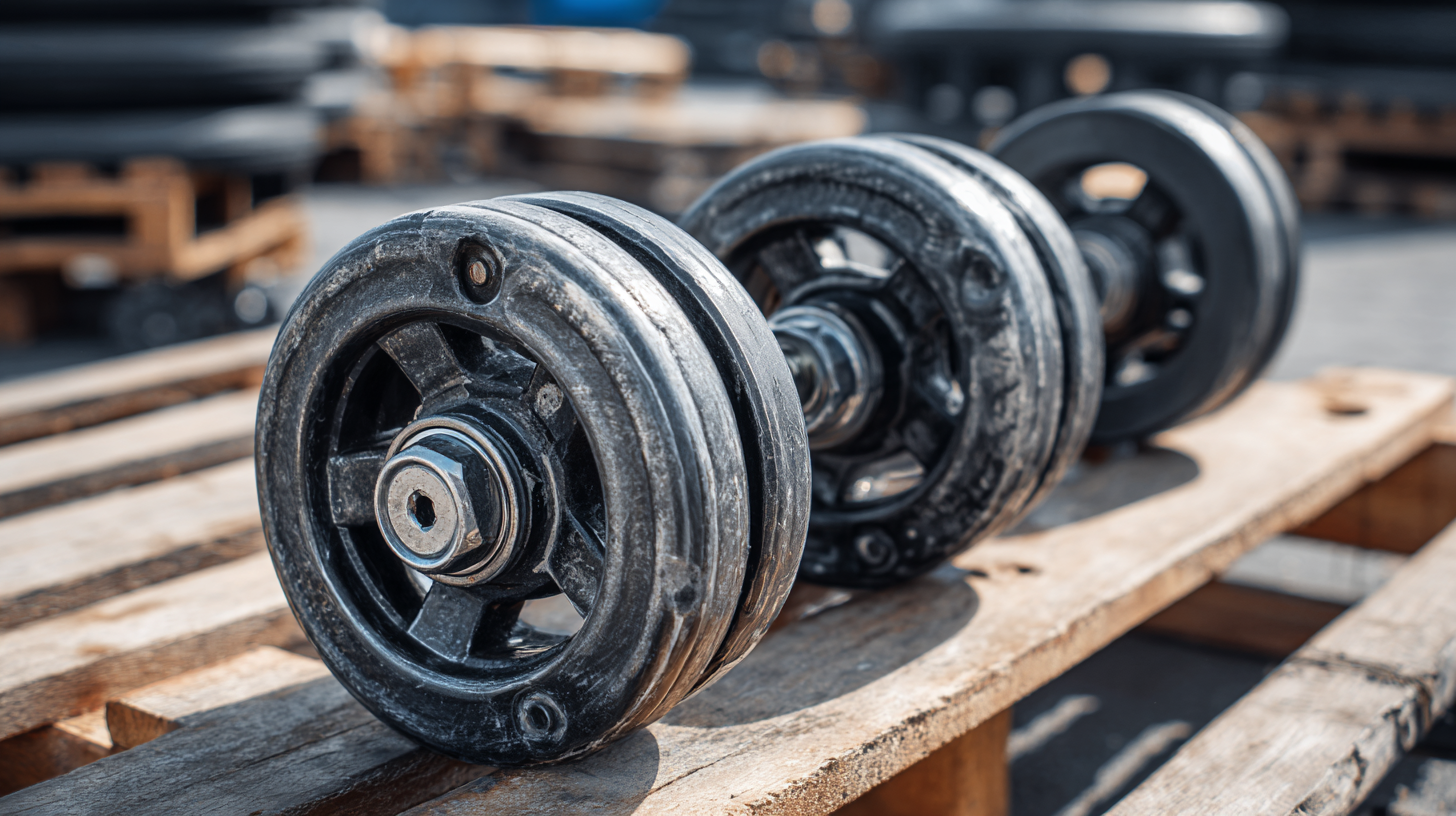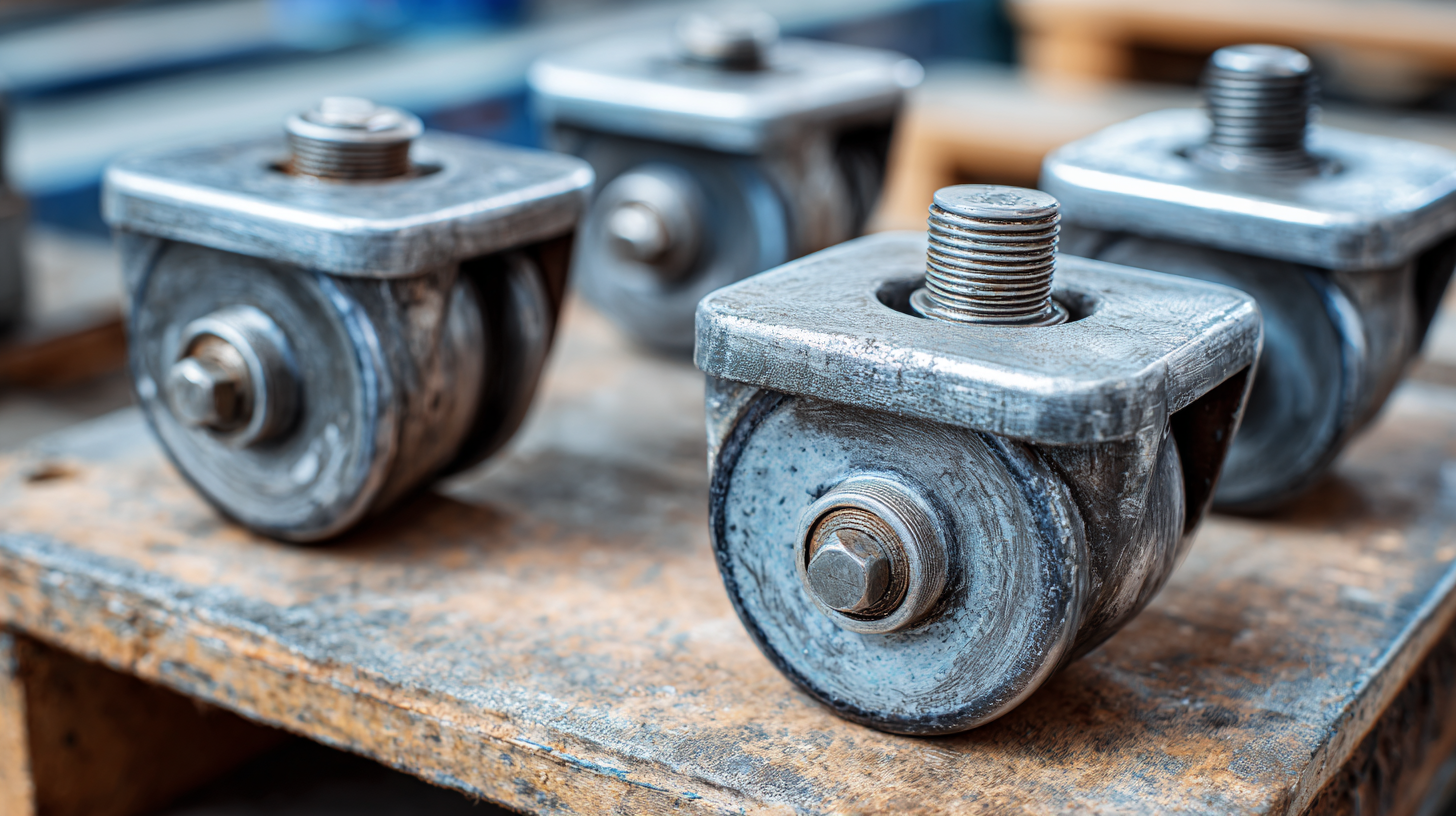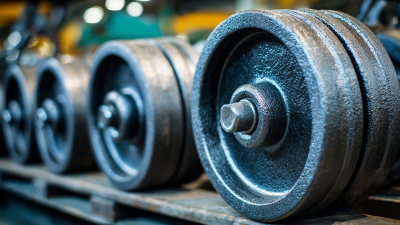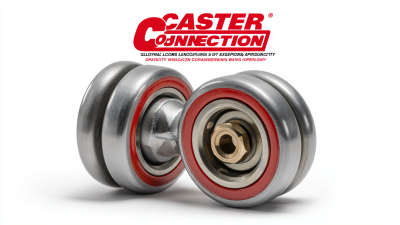
Exploring the Versatility of Swivel Plate Casters: Ultimate Guide to Choosing the Right Caster for Your Needs
In today's fast-paced industrial environment, the right equipment can significantly enhance operational efficiency and worker safety. One such crucial component is the Swivel Plate Caster, known for its remarkable versatility and ease of maneuverability. According to a report by the Material Handling Industry of America, approximately 70% of healthcare facilities and 50% of manufacturing plants utilize casters as essential components for improved workflow and mobility. When choosing the right caster, factors such as load capacity, wheel material, and swivel design must be carefully considered to match specific application needs. This guide aims to provide comprehensive insights into selecting the ideal Swivel Plate Caster, ensuring optimal performance whether in a commercial setting, warehouse, or healthcare environment. With the right information, users can make informed decisions that enhance productivity and safety across various industries.

Understanding Swivel Plate Casters: Key Features and Benefits
Swivel plate casters are essential components in various applications, providing unparalleled mobility and flexibility for moving heavy loads. One of the key features of these casters is their 360-degree rotation capability, which allows for easy maneuvering in tight spaces. This attribute is particularly beneficial in environments such as warehouses or workshops, where efficiency and accessibility are crucial. The construction materials used, ranging from durable metal to resilient polymer, also contribute to their strength and longevity, ensuring they can withstand significant weight and frequent use.

In addition to their physical attributes, swivel plate casters offer various benefits that enhance usability. For instance, some models include locking mechanisms that prevent unwanted movement, providing stability when needed. Furthermore, the ability to customize wheel sizes and hardness allows users to select items tailored to their specific flooring types and weight requirements. By understanding these features and their advantages, one can make informed decisions when selecting the right swivel plate caster to meet their individual needs, ultimately improving workflow and productivity in any setting.
Choosing the Right Wheel Material for Your Caster Needs
When selecting swivel plate casters, one of the most critical factors to consider is the wheel material. Various materials provide unique performance characteristics that can greatly impact the efficiency and durability of your equipment. For instance, polyurethane wheels are known for their excellent shock absorption and floor protection, making them an ideal choice for sensitive flooring. In contrast, rubber wheels offer superior grip on uneven surfaces and are optimal for outdoor use. According to recent industry reports, a growing number of warehouses are opting for custom caster solutions tailored to their specific operational needs, highlighting the importance of material selection.

Tips for Choosing Wheel Materials:
- Evaluate Your Environment: If you’re operating on smooth indoor surfaces, polyurethane or nylon wheels may be most beneficial. However, for outdoor or rough terrains, consider using rubber wheels.
- Load Requirements: Assess the weight of the items being moved. Heavy loads might necessitate stronger materials like steel or specialized load-bearing plastics to ensure safety and performance during use.
With the rise in demand for innovative cart systems, businesses are increasingly focused on optimizing their equipment for automation and efficiency. Selecting the right wheel material not only enhances mobility but can also contribute significantly to overall operational success.
Determining Load Capacity: How to Calculate the Right Specs
When selecting swivel plate casters, understanding load capacity is crucial for ensuring both safety and efficiency. Load capacity refers to the maximum weight a caster can support. According to a report by the Caster and Wheel Manufacturer's Association (CWMA), the effective load capacity can be determined by assessing the total weight of the equipment and any additional loads it carries. This is calculated using the formula: Load Capacity = Total Weight / Number of Casters. For example, if you have a 600-pound cart supported by four casters, each caster should be rated for at least 150 pounds to ensure a safe operation.
It's also essential to consider the type of surface on which the casters will be used. The same CWMA report indicates that swivel casters may have varying performance characteristics depending on whether they're used on hard surfaces or soft floors. On hard surfaces, a caster's shape and material can greatly influence mobility, while soft surfaces can cause greater load distribution, necessitating a caster with a higher load rating. Particularly, using solid rubber casters for uneven or soft ground provides better performance, minimizing the risk of damage to both the caster and the surface.
Swivel Plate Casters Load Capacity Comparison
Essential Tips for Measuring and Selecting the Perfect Caster Size
When choosing the right swivel plate caster for your needs, accurate measurement is crucial. The first step is to determine the weight capacity required for the caster. Consider not only the weight of the object being moved but also any additional load that may be added during use. Caster sizes come with specific weight ratings, so matching the caster to your load requirements will ensure safe and efficient operation.
Next, measure the height from the floor to the base of the object that requires mobility. This height will dictate the size of the caster you need to ensure proper clearance and functionality. Additionally, the wheel diameter plays a significant role in the caster’s performance. Larger wheels generally roll more easily over obstacles and provide better motion on uneven surfaces. Gather all necessary measurements including the total height, width, and intended surface conditions, to make an informed decision when selecting your swivel plate casters.
Maintenance and Care: Prolonging the Life of Your Swivel Plate Casters
Proper maintenance and care are essential for prolonging the life of your swivel plate casters. Regular cleaning is the first step in maintaining their functionality. Accumulated dust, dirt, and debris can hinder the smooth operation of the casters and potentially damage the internal mechanisms. Utilize a soft brush or a damp cloth to remove any buildup, ensuring that the swivel plate and wheels are free from obstructions. For casters exposed to outdoor elements or harsh environments, consider more frequent cleaning to prevent corrosion and rust, which can significantly reduce their lifespan.
Additionally, lubrication plays a vital role in the performance of swivel plate casters. Over time, the lubricant within the caster may dry out or become contaminated. Periodically check the caster mechanisms, particularly the swivel and bearing parts, and apply a suitable lubricant as needed. This not only ensures smooth mobility but also prevents wear and tear. It's advisable to follow the manufacturer's recommendations for lubrication frequency and type. By investing a little time and effort into the maintenance of your swivel plate casters, you can enhance their durability and efficiency, ensuring they meet your needs effectively.
Related Posts
-

The Top 5 Benefits of Using Cast Iron Casters for Your Heavy-Duty Equipment
-

How to Choose the Right Caster Trolley Wheels for Your Needs
-

What Are the Key Features of Caster Trolley Wheels
-

Understanding the Challenges of Heavy Caster Wheels in Industrial Applications
-

Global Leader in Caster Connection Wheels Manufacturing for Export Quality and Innovation
-

Innovative Solutions for Cast Iron Caster Applications
